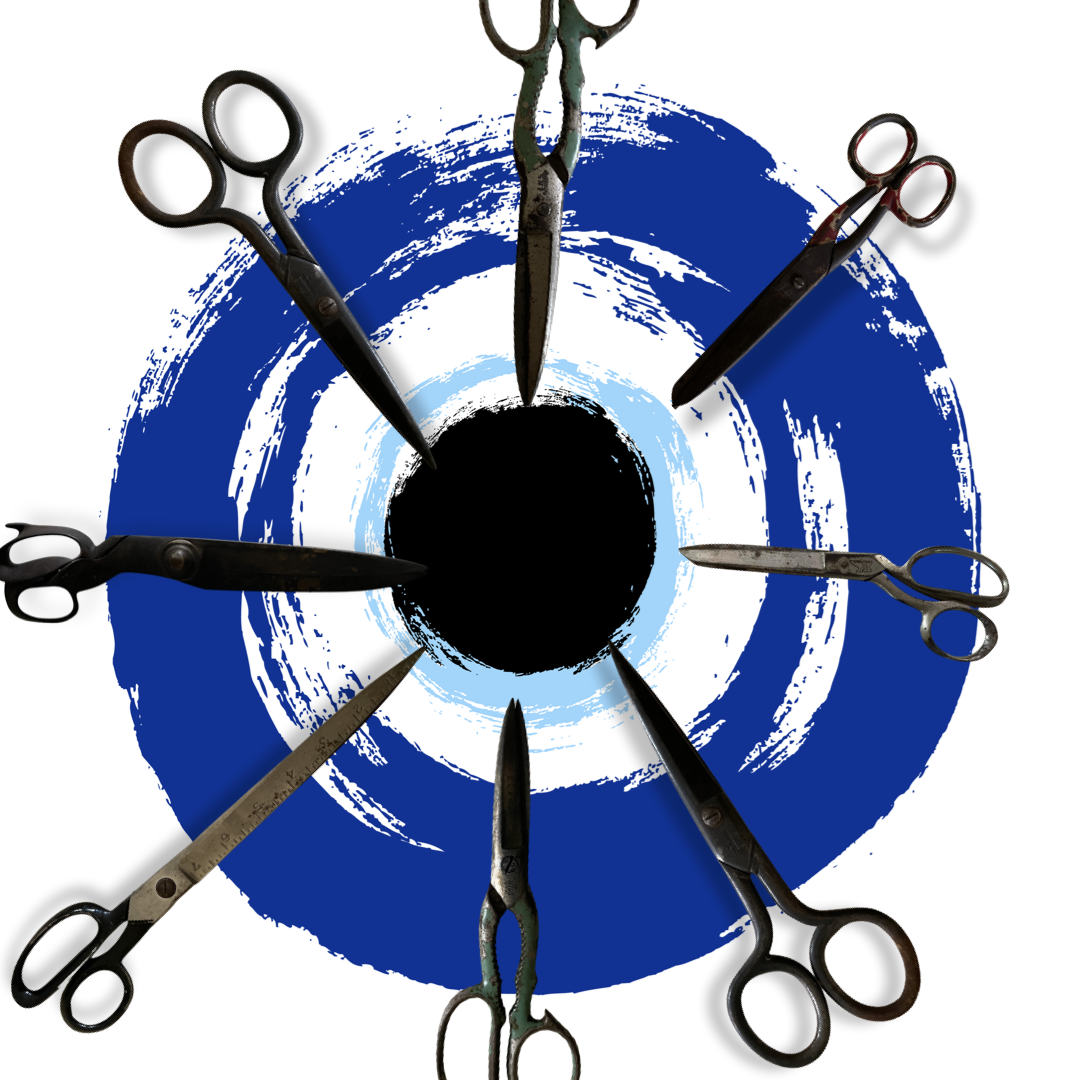May every evil eye in your life go blind?
The House explores the meanings of two ancient amulets — the hand and the eye.
“It was firmly believed by all ancients, that some malignant influence darted from the eyes of envious or angry persons, and so infected the air as to penetrate and corrupt the bodies of both living creatures and inanimate objects. ‘When any one looks at what is excellent with an envious eye, he fills the surrounding atmosphere with a pernicious quality, and transmits his own envenomed exhalations into whatever is nearest to him’.” — Frederick Thomas Elworthy quoting Heliodorus in The Evil Eye
***
***An Eye for an Eye?***
The evil eye is rooted in envy, one of the seven deadly sins. The word “envy” derives from the Latin word invidia, which derives from invidere (to look too closely). Another common expression for this phenomenon is to be “overlooked.”
Have you ever heard the expression that someone is “missing the forest for the trees”? In other words, they are so narrowly focused on something small and insignificant that is directly in front of them that they cannot see the whole picture. They have lost perspective.
So what does this have to do with envy?
The envious are suffering from resentment and covetousness, which makes them unable to see the beauty and truth of the world around them. They are, in a sense, blinded, by their malevolent feelings toward another person who has something that they want or something that they believe is undeserved.
In Dante Alighieri’s Purgatorio, the envious had their eyes sewn shut with iron wire “to prevent them from seeing and envying the good fortune of others.” Enforced blindness to impede the malevolent gaze — that, my dears, is some pretty heavy stuff.
So when we think about the evil eye as being rooted in envy, an emotion that is literally derived from the concept of myopically looking too closely at something, does it make sense that one of the oldest forms of protection against the evil eye is…wait for it…
AN EYE????
But wait… there is another ancient amulet that has been invoked against the evil eye for thousands of years, and it involves a slightly different approach. It’s actually an amalgamation of two symbols — the horn and the hand — each of which can protect against the evil eye.
***The Horned Hand***
There is a great scene in a book called The Seven or Eight Deaths of Stella Fortuna* where the main character, Stella, realizes that her sister, Tina, has harbored feelings of envy toward her throughout their entire lives. Despite the fact that Stella had worn a cornicello since she was a young woman, Tina had likely cast the evil eye in Stella’s direction, causing her to suffer a great deal of misfortune as well as the titular near-death experiences.
Here’s an excerpt: [WARNING: SPOILERS AHEAD!!!]
“Can Aunt Tina come over for Christmas dinner, at least?” Stella’s children beg her.
They don’t understand. They don’t understand the danger.
“She’s jealous,” Stella tells them over and over. She killed my baby, she wants to say, she almost killed me seven times because of the evil in her heart. But when she tries to explain why, she can’t find the words.
She can’t remember the mal’oicch unfascination spell, because she never believed in it enough to learn it back then and now she believes and it is too late. Instead, she makes the sign to ward off the invidia when she sees her sister, a fist with the index finger and pinky sticking out, two horns to pierce the evil eye.”
The gesture she describes is, of course, the mano cornuta, or horned hand. And Stella talks of “piercing” the evil eye, which would cause it to go blind.
So let’s recap where we are. It seems that there are two, potentially contradictory explanations of the evil eye and its antidote.
The first posits that the evil eye is caused by envy, a kind of blindness, that can be kept at bay with an eye amulet, such as a nazar or eye agate. We’ll call this, the “Eye Defeats Blindness” theory.
The second posits that the eye itself, through its envious gaze, is the source of evil and must be pierced with a horn to make it go blind. The horn can take the form of a literal horn (cornicello) or a gesture made with the hand (mano cornuta). We’ll call this the “Hand Defeats Eye” theory.
But wait…there is ANOTHER AMULET that combines the hand and the eye — the Hamsa, also known as the Hand of Fatima or the Hand of Miriam. The use of the hand as a sign of the divine presence and power dates back to at least ancient Egyptian times (see Elworthy), and continues today as the Hamsa is an amulet against the evil eye in Christian, Muslim and Jewish culture. The “hamsa” (literally 'five' in Arabic) is a hand with five fingers, and you will commonly see it combined with an eye in the center of the palm. With fingers pointing upward, it has apotropaic properties, as if the hand is saying “STOP!!!”
To wrap up, we’ll call this the “Eye in Hand” theory.
Bibliography:
Envy: The Seven Deadly Sins, Joseph Epstein
Purgatorio, Dante Alighieri
The Evil Eye, Frederick Thomas Elworthy
The Politics of Envy, Anne Hendershott
The Seven or Eight Deaths of Stella Fortuna, Juliet Grames
* Many thanks to the Mutual Protection Society for introducing The House to this wonderful book.





